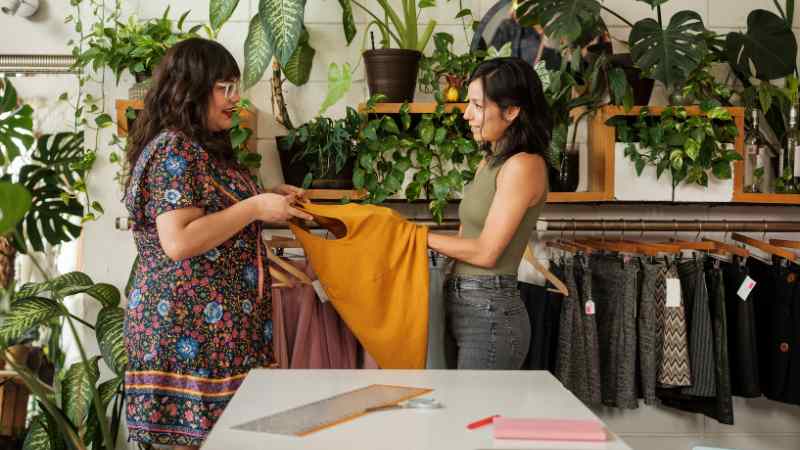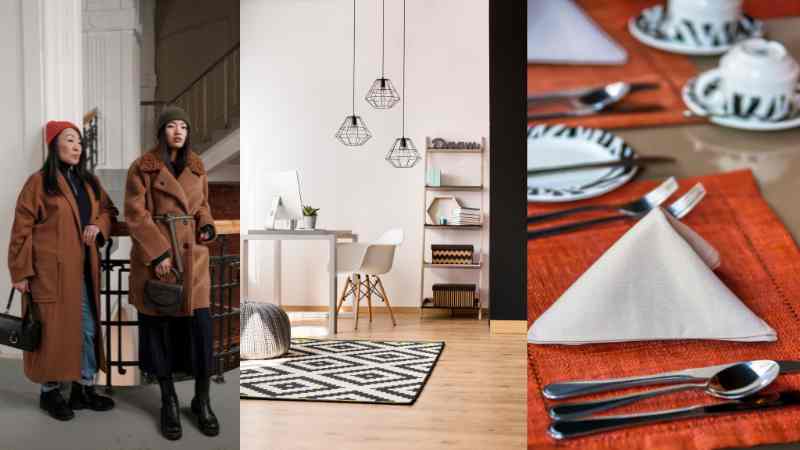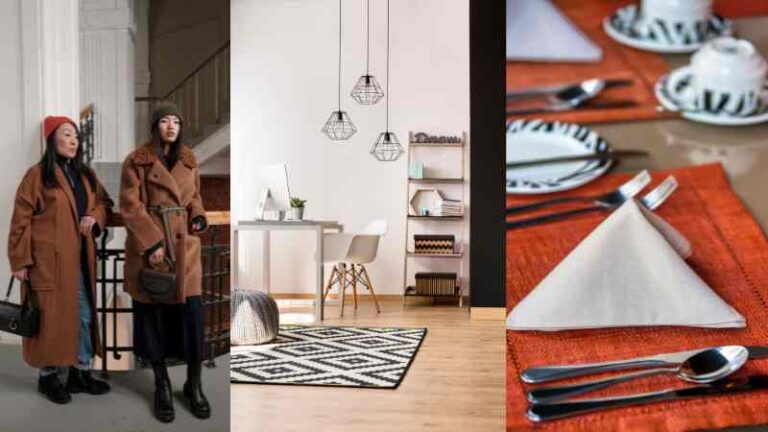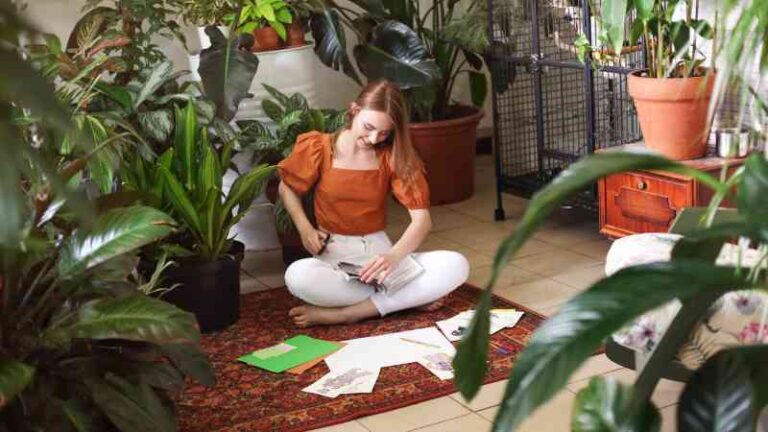where climate change and environmental degradation are becoming increasingly pressing issues, it is more important than ever to consider the impact of our choices on the planet. One area where we can make a significant difference is in our fashion choices. The fashion industry is notoriously known for its negative environmental impact, from the excessive use of water and chemicals in the production process to the accumulation of textile waste in landfills. However, there is a growing movement towards sustainable fashion, which aims to minimize these harmful effects and promote eco-friendly alternatives.

Sustainable Living: Eco-Friendly Fashion Choices
As a professional writer, I understand the urgency of finding solutions to protect our planet. That is why I am excited to introduce the concept of sustainable living through eco-friendly fashion choices. By making conscious decisions about the clothes we wear, we can contribute to a more sustainable future for ourselves and generations to come. In the following paragraphs, I will delve into the various aspects of sustainable fashion, from ethical production practices to the use of eco-friendly materials.
Join me on this journey towards a more sustainable and stylish lifestyle.
What are eco-friendly fashion choices?
Eco-friendly fashion choices are becoming increasingly popular as people become more aware of the impact the fashion industry has on the environment. One of the key aspects of eco-friendly fashion is choosing clothing made from sustainable materials. This includes fabrics like organic cotton, hemp, bamboo, and recycled fibers. These materials are grown or produced without harmful chemicals or excessive water usage, making them more environmentally friendly.
In addition to choosing sustainable materials, another eco-friendly fashion choice is buying second-hand or vintage clothing. By purchasing pre-owned items, you are giving them a new life and reducing the demand for new clothing production. This helps to minimize waste and reduce the carbon footprint associated with the manufacturing and transportation of new garments.
Another aspect of eco-friendly fashion is supporting ethical and fair-trade brands. These brands prioritize the welfare of their workers and ensure they receive fair wages and safe working conditions. By choosing to support these brands, you are contributing to a more sustainable and responsible fashion industry.

What is eco-friendly, sustainable fashion?
Eco-friendly, sustainable fashion refers to clothing and accessories that are produced in an environmentally conscious manner and have a minimal impact on the planet. It involves using sustainable materials, such as organic cotton, hemp, or recycled fabrics, instead of conventional materials that are harmful to the environment. Additionally, sustainable fashion promotes ethical practices throughout the entire supply chain, including fair labor conditions and reducing waste.
One of the key principles of eco-friendly, sustainable fashion is reducing the carbon footprint. This can be achieved by using renewable energy sources in production, minimizing water usage, and implementing efficient waste management systems. By focusing on reducing greenhouse gas emissions and conserving resources, sustainable fashion aims to minimize its negative impact on the environment and promote a more sustainable future.
Another important aspect of eco-friendly, sustainable fashion is promoting ethical manufacturing practices. This involves ensuring fair wages and safe working conditions for garment workers, as well as supporting local communities. Sustainable fashion brands often prioritize transparency and traceability, allowing consumers to know the origins of their clothing and the processes involved in its production.
What Is the Most Sustainable Type of Fashion?
When it comes to sustainable fashion, there are various types that are considered more environmentally friendly and ethical than others. One of the most sustainable types of fashion is vintage or second-hand clothing. By purchasing pre-owned items, we reduce the demand for new clothing production and extend the lifespan of garments. This helps to decrease the amount of textile waste that ends up in landfills.
Another sustainable option is organic and natural fibers. Fabrics such as organic cotton, hemp, linen, and bamboo are grown without the use of harmful chemicals, pesticides, or synthetic fertilizers. These materials are biodegradable and have a lower impact on the environment compared to conventional materials. Additionally, they are often produced under fair trade conditions, ensuring the welfare of garment workers.
Lastly, upcycled or recycled fashion is gaining popularity as a sustainable choice. Upcycling involves transforming old or discarded materials into new and useful products. This can include repurposing fabric scraps, using discarded garments to create new designs, or incorporating recycled materials such as plastic bottles into clothing production. By repurposing and reusing materials, we reduce waste and conserve resources.
How can fashion be more eco-friendly?
Fashion can become more eco-friendly by adopting sustainable practices throughout the entire supply chain. This includes using organic and recycled materials, reducing water and energy consumption during production, and minimizing waste. Brands can also focus on creating timeless and durable designs that withstand the test of time, reducing the need for constant consumption and disposal. By prioritizing ethical labor practices and fair wages, the fashion industry can support workers and improve their livelihoods.
In addition to sustainable production methods, fashion can also embrace circularity. This means designing garments with recyclability and reusability in mind, so that they can be easily disassembled and repurposed. Brands can also implement take-back programs where customers can return their old clothing for recycling or upcycling. By encouraging consumers to extend the lifecycle of their garments through repair, swapping, or donating, the fashion industry can reduce its overall environmental impact.
Education and awareness play a crucial role in making fashion more eco-friendly. Consumers need to be informed about the negative impacts of fast fashion and the benefits of choosing sustainable alternatives. Fashion brands can engage in transparent communication, sharing information about their supply chain, certifications, and environmental initiatives. By providing this knowledge, consumers can make more informed purchasing decisions and support brands that align with their values.
Sustainable Living: Eco-Friendly Fashion Choices
Patagonia is a renowned brand that exemplifies sustainable fashion. They are committed to producing high-quality, eco-friendly clothing that minimizes harm to the environment. Patagonia focuses on reducing waste, using recycled materials, and promoting fair labor practices.
In terms of waste reduction, Patagonia implements innovative strategies such as repairing damaged garments through their “Worn Wear” program. This initiative encourages customers to repair and reuse their clothing instead of discarding it. Additionally, Patagonia offers a recycling program where customers can bring back their old Patagonia products for recycling into new materials.
One of the key aspects of Patagonia’s eco-friendly approach is their use of recycled materials. They prioritize the use of recycled polyester, which is made from post-consumer plastic bottles. By utilizing recycled materials, Patagonia reduces the demand for virgin resources and minimizes the environmental impact of their clothing production.
Another important aspect of Patagonia’s commitment to sustainability is their dedication to fair labor practices. The brand is transparent about their supply chain, ensuring that workers are treated ethically and paid fair wages. They also partner with organizations that promote fair labor practices and support workers’ rights.
Overall, Patagonia sets a high standard for eco-friendly fashion choices. Through their waste reduction efforts, use of recycled materials, and commitment to fair labor practices, they demonstrate that sustainable fashion is not only possible but also desirable. By choosing Patagonia, consumers can make a positive impact on the environment while still enjoying stylish and durable clothing.
People Tree Ltd.
People Tree Ltd. is a pioneer in sustainable and eco-friendly fashion choices. They are committed to producing clothing that is both stylish and environmentally responsible. By using organic materials, fair trade practices, and low-impact dyes, People Tree Ltd. creates fashion that is not only better for the planet but also for the people who make and wear their clothes.
In terms of organic materials, People Tree Ltd. sources their fabrics from certified organic cotton, hemp, and other sustainable fibers. By avoiding the use of harmful chemicals and pesticides, they ensure that their clothing is free from toxins, which promotes a healthier environment. Additionally, their commitment to fair trade ensures that the artisans and workers involved in the production process are paid fair wages and work in safe conditions.
One of the standout features of People Tree Ltd. is their use of low-impact dyes. These dyes have a minimal environmental footprint and do not contain harmful chemicals that can pollute waterways. By using natural dyes derived from plants and minerals, People Tree Ltd. creates vibrant and beautiful clothing while minimizing its impact on the planet.
People Tree Ltd. offers a wide range of clothing options for both men and women, including dresses, tops, bottoms, and accessories. Their designs are modern and trendy, appealing to those who want to make a fashion statement while also being conscious of their environmental impact. By choosing People Tree Ltd. as your go-to fashion brand, you can contribute to a more sustainable and eco-friendly future.
In terms of organic materials, People Tree Ltd. sources their fabrics from certified organic cotton, hemp, and other sustainable fibers. By avoiding the use of harmful chemicals and pesticides, they ensure that their clothing is free from toxins, which promotes a healthier environment. Additionally, their commitment to fair trade ensures that the artisans and workers involved in the production process are paid fair wages and work in safe conditions.
One of the standout features of People Tree Ltd. is their use of low-impact dyes. These dyes have a minimal environmental footprint and do not contain harmful chemicals that can pollute waterways. By using natural dyes derived from plants and minerals, People Tree Ltd. creates vibrant and beautiful clothing while minimizing its impact on the planet.
Amour Vert
Amour Vert is a brand that embodies the concept of sustainable fashion. They are committed to producing high-quality clothing while minimizing their impact on the environment. The name Amour Vert translates to “green love” in French, which perfectly reflects their ethos.
Amour Vert focuses on using eco-friendly materials in their garments. They prioritize the use of organic and natural fibers, such as organic cotton, TENCELTM Lyocell, and recycled polyester. These materials not only reduce the reliance on harmful chemicals and pesticides but also have a lower carbon footprint compared to conventional fabrics.
In addition to sustainable materials, Amour Vert also emphasizes ethical production practices. They partner with manufacturers who adhere to fair labor standards, ensuring that workers are treated well and paid fair wages. By supporting ethical production, Amour Vert contributes to the overall well-being of the communities involved in their supply chain.
Amour Vert’s commitment to sustainability goes beyond just the materials and production methods. They also have a take-back program called “The Garment Collective,” where customers can return their old Amour Vert garments for recycling. This initiative reduces waste and promotes circularity in the fashion industry.
Overall, Amour Vert is a leading brand in the sustainable fashion movement. Their dedication to eco-friendly materials, ethical production, and recycling programs sets them apart in the industry. By choosing Amour Vert, consumers can make a positive impact on the environment and support a more sustainable future.
How to Make Sustainable Fashion Choices with Amour Vert
- Choose garments made from organic cotton, TENCELTM Lyocell, or recycled polyester.
- Check the label for certifications like GOTS (Global Organic Textile Standard) or OEKO-TEX Standard 100.
- Support ethical production by opting for brands that prioritize fair labor practices.
- Consider the longevity of the garment and its potential for recycling or repurposing.
- Participate in Amour Vert’s Garment Collective program by returning old garments for recycling.
Alternative Apparel, Inc.
Alternative Apparel, Inc. is a leading brand in the sustainable fashion industry, offering eco-friendly clothing options for conscious consumers. By prioritizing sustainable practices and using organic materials, Alternative Apparel aims to reduce the negative impact of traditional fashion on the environment. Their commitment to sustainability extends to every aspect of their business, from design to production and packaging.
One of the key features of Alternative Apparel’s eco-friendly fashion choices is the use of organic materials. They carefully source and select organic cotton, recycled polyester, and other sustainable fabrics for their clothing lines. These materials are grown and produced without the use of harmful chemicals, pesticides, or synthetic fertilizers, reducing the environmental footprint of the garments.
In addition to using organic materials, Alternative Apparel incorporates innovative manufacturing techniques that minimize waste and energy consumption. They prioritize responsible production practices, such as water-saving dyeing processes and ethical manufacturing standards. By adopting these sustainable practices, Alternative Apparel ensures that its fashion choices are not only stylish but also environmentally friendly.
How to make sustainable fashion choices with Alternative Apparel, Inc.
1. Start by exploring Alternative Apparel’s website to discover their range of eco-friendly clothing options.
2. Look for garments made from organic cotton or recycled materials.
3. Consider the durability and longevity of the clothing before making a purchase.
4. Check the company’s sustainability certifications and commitments.
5. Support brands like Alternative Apparel that prioritize ethical and sustainable practices.
By choosing Alternative Apparel, Inc. for your fashion needs, you can contribute to the sustainable living movement and make a positive impact on the environment without compromising on style.
See More
Sustainable living is becoming increasingly important as we strive to protect the environment and reduce our carbon footprint. One area where we can make a positive impact is in our fashion choices. By opting for eco-friendly fashion, we can support brands that prioritize sustainability and ethical practices, ultimately contributing to a more sustainable future.
One way to embrace eco-friendly fashion is by choosing clothing made from sustainable materials. Organic cotton, for example, is grown without the use of harmful pesticides and requires less water than conventional cotton. Other sustainable fabrics include hemp, bamboo, and linen. Additionally, recycled materials such as polyester made from recycled plastic bottles or fabrics made from upcycled materials are excellent choices. These materials help reduce waste and conserve resources.
Another aspect to consider is the production process. Look for brands that prioritize fair trade practices and ensure their workers are paid a fair wage. Additionally, supporting local or independent designers can help reduce the carbon emissions associated with the long-distance transportation of goods. By choosing brands that are transparent about their supply chain and working conditions, you can make a more informed decision as a conscious consumer.
More Post: Fashionable Living: Style Tips For Your Home
How to Make Eco-Friendly Fashion Choices:
- Research brands that focus on sustainability and ethical practices.
- Choose clothing made from sustainable materials like organic cotton, hemp, bamboo, or linen.
- Look for recycled materials or upcycled fabrics to reduce waste.
- Opt for fair trade brands to support ethical working conditions.
- Consider supporting local or independent designers to reduce carbon emissions from transportation.
- Read labels and product information to make more informed choices.
- Learn to care for your clothes properly to extend their lifespan.
- Consider renting clothes or participating in clothing swaps to reduce consumption.
Feedback
In today’s world, where environmental concerns are becoming increasingly important, making eco-friendly fashion choices is a great way to contribute to sustainable living. By opting for sustainable fashion, you can reduce your carbon footprint and promote ethical practices within the fashion industry.
One of the first steps towards sustainable living in fashion is to choose clothing made from environmentally friendly materials. Look for garments made from organic cotton, hemp, or recycled materials. These materials are biodegradable and have a lower impact on the environment compared to conventional fabrics. Additionally, consider supporting brands that prioritize fair trade practices and ensure the welfare of their workers.
Another aspect of sustainable fashion is to embrace a minimalist approach. Instead of buying clothes impulsively, focus on building a versatile wardrobe with timeless pieces that can be mixed and matched. This reduces the need for frequent shopping and minimizes waste. Additionally, consider repairing and upcycling old clothes to extend their lifespan.
Lastly, it is important to properly dispose of unwanted clothing. Rather than throwing them away, consider donating them to charity or clothing recycling programs. This way, your clothes can find a new home and avoid ending up in landfills.
How to make sustainable fashion choices:
1. Research eco-friendly materials: Look for clothing made from organic cotton, hemp, or recycled materials.
2. Embrace a minimalist approach: Build a versatile wardrobe with timeless pieces that can be mixed and matched.
3. Properly dispose of unwanted clothing; donate it to charity or clothing recycling programs.
By making sustainable fashion choices, you can contribute to a greener future and promote ethical practices within the fashion industry. Start making a difference today!
Innovative, sustainable fashion ideas
Sustainable living is becoming increasingly important in today’s world, and one area where we can make a positive impact is through our fashion choices. By opting for eco-friendly fashion, we can reduce our carbon footprint and support a more sustainable industry.
There are several innovative, sustainable fashion ideas that you can incorporate into your wardrobe. One option is to choose clothing made from organic or recycled materials. This includes garments made from organic cotton, hemp, or recycled polyester. These materials are less harmful to the environment and often have a lower carbon footprint compared to conventional fabrics.
Another idea is to embrace second-hand fashion. Thrift stores, online marketplaces, and clothing swaps are great places to find unique and affordable pieces. By giving pre-owned clothing a second life, you extend its lifespan and reduce the demand for new garments, which saves resources and reduces waste.
If you’re feeling creative, you can also try upcycling old clothing into new and fashionable pieces. This could involve repurposing old jeans into a denim skirt or transforming a vintage shirt into a trendy crop top. Upcycling not only saves garments from ending up in landfills but also allows you to express your personal style in a sustainable way.
- Research eco-friendly fashion brands that prioritize sustainable practices.
- Opt for clothing made from organic or recycled materials.
- Explore second-hand fashion options through thrift stores, online marketplaces, or clothing swaps.
- Try your hand at upcycling old clothing into new and fashionable pieces.
How Can the Fashion Industry Be More Sustainable?
Sustainable living is becoming increasingly important as we strive to reduce our impact on the environment. One area where we can make a significant difference is in our fashion choices. The fashion industry is known for its environmental impact, from the production of raw materials to the disposal of clothing. However, there are ways in which the fashion industry can become more sustainable.
One way the fashion industry can be more sustainable is by using eco-friendly materials. This includes using organic cotton, hemp, or bamboo instead of traditional cotton, which requires large amounts of water and pesticides. Additionally, recycled materials, such as polyester made from recycled plastic bottles, can be used to reduce waste. By opting for these materials, the fashion industry can reduce its carbon footprint and minimize the use of harmful chemicals.
Another way to promote sustainable living in the fashion industry is by encouraging ethical manufacturing practices. This involves ensuring safe working conditions, fair wages, and the avoidance of child labor. By supporting brands that prioritize ethical manufacturing, consumers can contribute to a more sustainable fashion industry. Additionally, companies can implement recycling programs or take-back initiatives to reduce clothing waste and promote circular fashion.
Consumers can also make a difference by adopting sustainable fashion habits. One way to do this is by investing in high-quality, timeless pieces that can be worn for years instead of fast fashion trends that go out of style quickly. Additionally, consumers can embrace second-hand shopping, swapping clothes with friends, or renting special occasion outfits. By reducing the demand for new clothing and extending the lifespan of garments, individuals can play a part in creating a more sustainable fashion industry.
Sustainable Fashion: Exploring Eco-Friendly Clothing Options
Making eco-friendly fashion choices is not only a trend but also a responsible way to contribute to sustainable living. By opting for sustainable materials, such as organic cotton or recycled fabrics, we can reduce the environmental impact of fashion production and contribute to preserving our planet’s resources. Additionally, supporting brands that prioritize fair trade practices and ethical manufacturing ensures that garment workers are treated fairly and provided with safe working conditions.
Embracing sustainable fashion is more than just a personal style statement; it is a conscious decision to make a positive impact on the environment and society. As consumers, we have the power to drive change in the fashion industry by demanding transparency, supporting sustainable brands, and advocating for ethical practices. By choosing eco-friendly fashion, we can redefine the concept of beauty and style, proving that fashion can be both trendy and sustainable.
In the end, sustainable living is not just about the choices we make in our daily lives but also the choices we make as consumers. By embracing eco-friendly fashion, we can contribute to a greener future and inspire others to do the same. Let us remember that every purchase we make is an opportunity to support a more sustainable and ethical fashion industry. Together, we can make a difference and create a world where fashion and sustainability go hand in hand.








